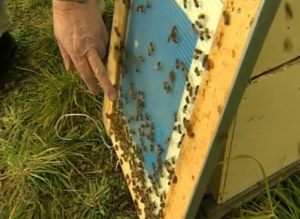Introduction
The science behind Bee Venom is still developing and researchers continue to find new uses for it. We add small quantities of Bee Venom to Manuka Honey to create our hugely successful Nectar Ease product range and this also forms the basis for our Royal Nectar skincare range.
Bee venom composition
Bee Venom composition and strength varies between Honeybee species and small variances are identifiable between bee breeds and locations.
The natural components of Bee Venom have been isolated and studied scientifically and one of the most important components has been identified as Melittin. Making up about 50% of the Bee Venom.
Bee venom uses
Here at Nelson Honey we use Bee venom in two ways and have become famous for our innovation with this ingredient.
We started adding Bee Venom to honey over 3 decades ago after feedback from beekeepers was so positive. A range of Nectar Ease products was formed with our original Bee Venom and Manuka Honey, gaining a great reputation in New Zealand.
Nectar Ease honey was originally used as an ingredient of a facial treatment gaining worldwide media attention from which our Royal Nectar skincare range was born.
Today the Royal Nectar skincare range has a strong following and is particularly famous with Asian consumers.
Bee venom extraction
The Bee Venom used in Nectar Ease is extracted exclusively from the Apis Melifera species of Honeybee. Bee Venom is extracted from Honeybees using low voltage electrical stimulation. Beekeepers use a so-called collection frame that has wire electrodes installed that have a low electrical current running through them on a glass base, just like in the picture above. These frames are installed in honey hives and bees that come into contact with the wire electrodes will receive a small electrical shock. This causes bees to sting the glass, releasing the venom without losing their barbed sting (which usually results in bee deaths).
Once the collection process has finished, the Bee Venom dries on the glass, then the whole frame is transported to a laboratory to collect the venom.
No bees are harmed during the bee venom collection process.



